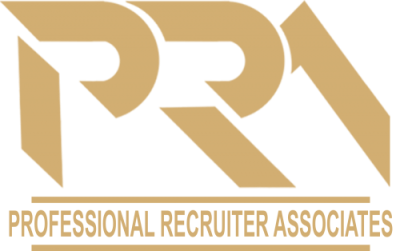5 Digital Workplace Innovations to Attract and Retain Top Talent
 Internet of Things concept. Wireless Communication Network. Information Communication Technology. abstract image visual.
Internet of Things concept. Wireless Communication Network. Information Communication Technology. abstract image visual.
Article Link: https://hrexecutive.com/5-digital-workplace-innovations-to-attract-and-retain-top-talent/
By: Amanda Osuna
“Record low unemployment levels and a growing skills gap are driving employers to focus on improving their overall workplace experience,” Rebecca Henderson, CEO of the HR consulting firm Randstad Sourceright, says in summing up the firm’s 2018 Talent Trends Report. “Beating the competition for talent in 2018,” she adds, “begins in the workplace.”
Shaping those experiences involves both the physical workspace and the digital technologies that employers can put in that space—automation, artificial intelligence and collaboration tools that better connect people to their physical work environments. Yet, Randstad found that only about one in 10 companies are wholly embracing the types of technologies that help create a destination workplace. Those companies are, on average, 165 percent more likely to achieve business objectives, increase revenue, save costs and see return on investments, than companies that have been slow to turn to those technologies.
Here are five suggestions, based on ways progressive employers we work with are using digital innovation, to reimagine the workplace and create the experience sought by today’s workers:
-
Ease the journey from home to work.
The workplace experience starts before an employee (or prospective employee) enters the building. Consider developing a company app that allows them to locate available parking spaces before they even pull out of their driveway. If your company has a flexible desk policy, you can set up a kiosk near the entrance where employees can determine where they will be working on that particular day. The app on that kiosk could be programmed to include each employee’s workplace preferences. If so, the system could be programmed to predict the most optimal desk or office for that employee.
-
Automatically personalize workspaces.
A forward-thinking company can continue the frictionless experience when the employee arrives at their workspace. By then, your company’s system can have already adjusted their desk and environment to the settings in their profile, similar to the driver’s seat of an automobile automatically adjusting to a specific person getting behind the wheel.
That personal profile becomes vital to shaping each person’s workplace environment and experience, particularly as organizations move to hoteling, and to flexible, configurable workspaces. These spaces offer areas for quiet work and group collaboration and provide common spaces that encourage spontaneous interaction within and across teams.
-
Connect for collaboration.
Providing workers with continuous access to digital collaboration tools, as well as both wired and wireless Internet connectivity, is vital to delivering a fulfilling, frictionless workplace experience. Today 43 percent of American employees work remotely at least some of the time, according to a Gallop poll.
All this mobility and flexibility requires digital communication tools like a versatile, reliable video conferencing application to accommodate hybrid meetings, for example, where some participants are on-site, and others are offsite. That puts remote employees on even footing with on-site employees, allowing them to seamlessly collaborate in real time.
-
Optimize the conference room experience.
One sure way to improve the employee experience is to enhance the overall meeting experience. That means less frequent, more to-the-point meetings, plus the ability to find space with little to no notice for brief, unplanned get-togethers. It also means ensuring that meeting room technology is in working order and in ready mode.
Whether you integrate it yourself, or deploy workspace management software, you can manage meeting rooms, integrating collaboration tools, sensors and digital signage to make meetings more employee-friendly. IoT sensors now can sense the occupation status of a meeting room, whether they were booked through the system or not. And employees can book and rebook rooms through self-service apps accessible through a browsers window on their desktop, mobile app, kiosk or even tablet-based digital signage. That signage can automatically update the occupation status of a space in real time, so if someone needs to book a meeting in a pinch, the signage shows them available spaces.
Through a meeting room management app, employees could also request a space with specific technologies, so the room has the equipment they need, eliminating time waste. IoT sensors within meeting spaces can also alert the company to issues with AV equipment, for example, so technology is in working order when it’s needed.
-
Tap into creative satellites.
There will be occasions when all the meeting rooms in an office are booked. Instead of waiting for internal space to free up, you can also set up your system to see if there’s space to meet at a nearby co-working space or coffee shop with which your company has a relationship. The employee can book space at one of those venues, and even have participants’ favorite beverages and pastries waiting when they arrive. Instead of building additional office space they might use only sporadically, the coffee shop or co-working space becomes a satellite office.
The lasting positive impressions that experiences like these create for people don’t just serve as talent magnets. When technology makes employees happier and gives them more time to focus on their work, employers reap the benefits, and the workers stay around for much longer.

Professional Recruiter Associates